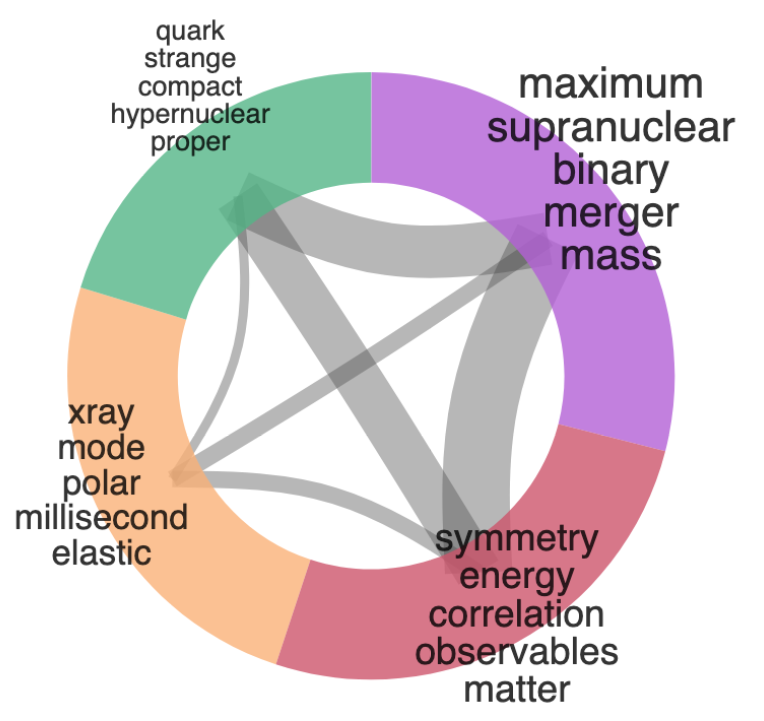NICER / ISS Science Nugget
for December 10, 2020
The Impact of NICER's Exploration of Neutron Star Interior Composition
This week NICER marks one year since the release of its first results on the interior composition of neutron stars. In December 2019 the Astrophysical Journal devoted a Focus issue to NICER's measurement of the mass and radius of the rotation-powered millisecond pulsar PSR J0030+0451. The seven papers in the focus issue have already been cited over 600 times, by over 260 separate papers.
NICER measures the neutron star's mass and radius using relativistic effects that change the properties of X-rays emitted from the star's surface. Mass and radius are set by the ultradense nuclear matter in the neutron star core, densities far beyond those we can reach in experiments on Earth. So it is no surprise that the bulk of the citations to NICER's first results come from the nuclear physics community. There is lively debate on the implications for the existence of various states of strange matter in the neutron star core, and of the links to lab-based experiments measuring the properties of neutron-rich nuclei. Models with different particle compositions and intra-particle forces are all being put to the test. NICER's results are being used both on their own, and in combination with complementary measurements from gravitational waves, radio pulsar observations, and different X-ray techniques.
The method used by NICER also maps the location and properties of the X-ray emitting hotspots on the star's surface, which mark the magnetic poles. An unexpected result of NICER's analysis was that the star's magnetic field is far from the simple dipole field depicted on the mission patch. The results have therefore been of extreme interest to astrophysicists trying to understand pulsar magnetic fields and emission mechanisms. How the magnetic field of PSR J0030+0451 evolved to the state that we find it in remains a challenging question!
Excitement is now building for the release of NICER's next results in early 2021: these will provide even tighter constraints on the nature of dense nuclear matter and pulsar magnetic fields.
Figure: Cumulative citations (left) and breakdown into subject areas (right), from NASA's Astrophysics Data System, compiled by Prof. A. Watts and Dr. A. Bilous (Univ. of Amsterdam, ASTRON), for the papers that have cited NICER's work on PSR J0030+0451. Roughly half of the papers focus on nuclear physics implications for either stable states of strange quark matter (green) or neutron-rich matter (red). A quarter focus on what is being learned by NICER when combined with gravitational wave measurements of neutron star mergers, in particular about the maximum mass of neutron stars, beyond which only black holes can exist (purple). The remainder are concerned primarily with pulsar magnetic fields and radiation mechanisms (yellow).
<< Previous
Main Index




